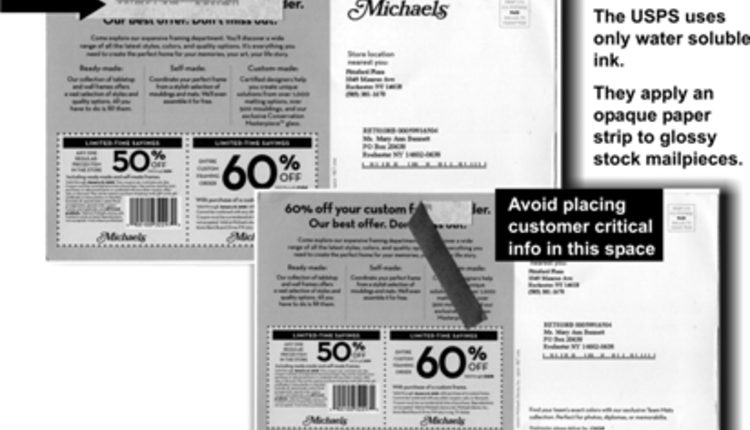The rate hike is presenting both challenges and opportunities for many companies and organizations. How do these companies, from the dot-coms to Fortune 500s prepare for the increase? The postal and media team at Harte-Hanks offers these tips:
Clean mailing lists
Whether using a customer list or a list of prospective customers, it is imperative to maintain clean mailing lists. That is, lists kept in a computerized format to ensure the highest possible deliverability rate. Incorporate these in-depth mail file hygiene practices:
Redesign mail to take best advantage of rate changes
With any change in postal rates comes a need to re-evaluate mail design for the various rate categories in which a company mails. What shape should a mailpiece be? What are its dimensions and how much does it weigh? Design mailpieces with enough flexibility to maximize possible postal savings while enhancing postal delivery performance. This requires knowledge of the rate changes and where new opportunities may exist for optimal savings.
Target mail a must for today's direct mail
When mailing to customers, execute sound database technology and methodology to take advantage of both past customer transaction data and response analysis. Always test and measure each mailing's performance to different customer segments. When soliciting for new customers, match prospects to the demographics and psychographics of the best current customers. Consider using "Or Current Resident" to targeted addresses. If a customer has moved, the new resident may fit the current best customer profile. Make effective use of suppression and pander lists such as the Direct Marketing Association's. Do not mail consumer file and your company's own do-not-mail file on consumers and business customers. Personalize mailings by testing and developing different versions of mailpieces to distinct · segments within an audience. Tailor the mailpiece to the recipient's behavior. For prospects and less profitable customer segments, employ smaller, more limited mailpieces than ones mailed to the most profitable customers. If sending larger volumes of mail, evaluate and test opportunities to drop ship or "commingle" mail with other mailers. In some mail categories, this rate case makes these options more cost-effective.
Be compatible with postal processing equipment
Make sure the design of mailpieces facilitates easy postal processing so potential problems with equipment performance are minimized or avoided. For example, there are copy formatting and fonts difficult for postal equipment to read and make it tough to identify a return address. Avoiding these challenges eliminates the increasing occurrence of "loop" mail mail sent to the return address because postal automation equipment read it as the delivery address. If windows on either mail or envelopes are employed, ensure they are of adequate size to assure the delivery address is always visible. Use materials that are postal friendly. Avoid design and placement of information in postal requested "clear zones" on the face of mailpieces, which allows for postal use if required. Involve mail preparation, postal experts and a postal design specialist to assure complete mail deliverability without compromising marketing benefit.
Partner with postal contacts
Communicate with the USPS about upcoming mailing events. Describe the purpose of an upcoming mailpiece, expected mail drop dates at a USPS facility, the required dates of a delivery window and other pertinent mail delivery needs.
Track the progress of all mailings
Marketers often keep track of response rates, but it is also important to track the progress of the whole mailing in a log. Include the mail date and drop ship entry dates for privately transported mail and the requested delivery window performance. The latter may require the integration of telephone tracking services, seed addresses in a mailing, the use of the new USPS Planet Code Destination Confirm service, Web Advance and other USPS or privately offered mail monitoring services.
Track response rates by segment and media
If segmenting customers, track response rates by each customer segment or data cell. If combining several lists for prospecting, measure response rates for each list used. A postage rate increase is an opportune moment to test the use of other media. If employing a multimedia campaign, track responses by each media channel used, Internet, mail, radio, television, print ads in magazines and newspapers, point-of-sale and others. An analysis of performance here will enable the optimal media mix for future customer and prospect communication and will give better determination if mail is the right medium, for what purpose and in what percentage.
Debrief the team regularly on mail performance
Use follow-up communications with all parties, including the USPS, to review all successes and failures in the mailing campaign. Assign responsibility for corrective action and timelines for resolution, and then make adjustments for the next mailing.
Outsource expertise when necessary
For the mail campaign to reach its full effectiveness, it is important to make all of the above work seamlessly as possible. Having expertise on staff is rare. Employ a full-service provider with fully integrated systems and processes and include them on the company's mail communication team.
Charles M. Howard is vice president, Postal Affairs and Special Projects at Harte-Hanks Direct Marketing. He is active with all levels of the USPS, including serving as industry co-chair of the Baltimore Postal Customer Council for six years.
Harte-Hanks, Inc. San Antonio, Texas is a worldwide, direct and interactive services company that provides end-to-end customer relationship management (CRM) and related solutions, including direct mail design, production and logistics. You can visit the Harte-Hanks Web site at www.harte-hanks.com or call 800-456-9748.




